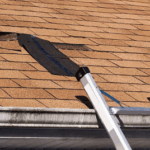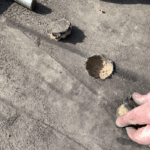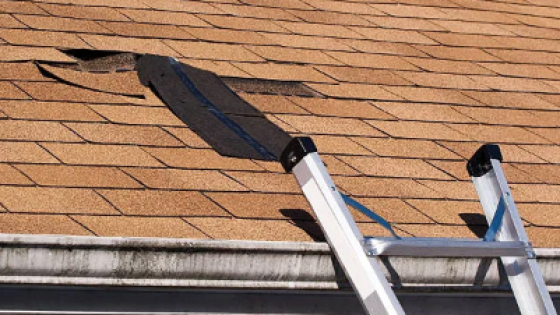Your roof is one of the most critical parts of your home, protecting it from the elements and maintaining its overall structural integrity. However, when your roof is damaged, you may be tempted to file an insurance claim immediately.
While there are instances when a claim is appropriate, there are times when filing an insurance claim may not be the best course of action. Understanding when to avoid filing a claim can save you time, money, and frustration in the long run.

1. Your Roof is Old or Worn Out
One of the most common reasons to avoid filing an insurance claim is when your roof is simply too old or worn out. Most homeowner insurance policies do not cover damage caused by normal wear and tear. If your roof is nearing the end of its life expectancy—typically 20-30 years for asphalt shingles—your insurance company may deny the claim outright.
Why Avoid Filing?
If your roof is old, the damage might not be due to an isolated incident (such as a storm) but rather the natural aging of the materials. In these cases, your insurer could deem that the roof has exceeded its useful life, and they may not provide coverage. Moreover, insurance companies often prorate payouts based on the age of the roof. So, if your roof is nearing its end, the payout might be minimal, not worth the effort, and you could still be left with a substantial out-of-pocket cost to replace the roof.
Instead of filing a claim, consider saving for a roof replacement, especially if there are no major incidents causing damage.
2. You Will Be Upside Down on Your Deductible
Another crucial factor to consider before filing a claim is whether the cost of the repair exceeds your deductible. In some cases, homeowners find that the cost to repair their roof is not much more than their insurance deductible. If you’re going to end up “upside down” on your deductible—meaning the repair cost is nearly equal to or lower than your deductible—filing a claim may not make financial sense.
Why Avoid Filing?
If the cost to repair the roof is $2,000 and your deductible is $1,500, the insurance payout would be a mere $500. Is it worth filing a claim for such a small amount? Moreover, even a minor claim can lead to increased premiums or a loss of claims-free discounts. Essentially, you’re paying more in the long run for a minimal payout, and this could leave you feeling like the claim was unnecessary.
3. You Filed a Claim Last Year
If you filed a roof claim recently—within the last year or two—it’s generally a good idea to avoid filing another claim unless absolutely necessary. Insurance companies closely monitor how often you file claims, and filing too many claims in a short period can lead to higher premiums, or worse, policy non-renewal.
Why Avoid Filing?
Insurance companies may label you as a “high-risk” homeowner if you file claims too frequently. Even if your current claim is legitimate, the cumulative effect of multiple claims can signal to the insurer that your property is prone to damage, and they may take adverse actions such as increasing your deductible, raising your premiums, or even canceling your policy. Additionally, if the damage isn’t severe and can be handled out-of-pocket, it’s better to do so rather than risk damaging your insurance record.
4. The Damage is Minor and Easily Repairable
Not all roof damage requires a full-blown insurance claim. If you have minor damage, such as a few missing shingles, or if the damage can be repaired easily without breaking the bank, it’s often better to handle these repairs on your own.
Why Avoid Filing?
Filing a claim for minor damage might not be worth the hassle, especially if it doesn’t exceed or barely exceeds your deductible. If you’re able to fix small problems yourself or hire a contractor for a reasonable fee, you can maintain your claims-free status, which can result in lower premiums over time. Furthermore, small roof repairs are often much cheaper than you might expect, particularly if you have a reliable local roofing company in Knoxville, TN, to assist you.
5. The Damage Wasn't Caused by a Covered Peril
Insurance policies generally only cover certain types of roof damage, typically those caused by “perils” such as storms, fire, or falling objects. If the damage was caused by something not covered under your policy, such as neglect or general aging, your claim will likely be denied.
Why Avoid Filing?
If you file a claim for damage that isn’t covered by your policy, you could be stuck with the bill, and your premiums might still increase due to the fact that you filed a claim. It’s essential to thoroughly review your policy to ensure that the damage is due to a covered peril before proceeding with a claim.
Pros and Cons of Filing a Roof Insurance Claim
| Pros | Cons |
|---|---|
| Can help cover large, unexpected repair costs | Filing too many claims can raise premiums |
| Useful for damage caused by covered perils | Minor claims might not be worth the deductible |
| May cover total roof replacement after severe damage | Older roofs may result in minimal payouts |
| Provides peace of mind in the event of disasters | Can lead to policy non-renewal if claims are frequent |
FAQs About Filing An Insurance Claim
It’s recommended to inspect your roof twice a year, in the spring and fall.
Deductibles usually range from $500 to $2,000 depending on your policy.
Yes, it can, especially if you file multiple claims within a short period.
No, insurance policies do not cover wear and tear, only damage from specific perils.
Yes, if the tree branch falls due to wind or other covered perils.
It typically takes 30 to 60 days, but this can vary by provider.
You can appeal the decision or cover the costs out of pocket.
A new roof can increase home value, but it’s not always necessary.
Yes, but only if the leak is caused by a covered event.
No, damage due to neglect or poor maintenance isn’t covered.



























